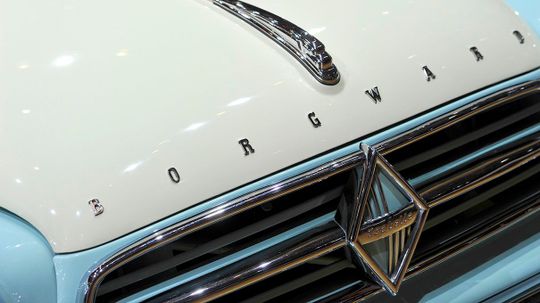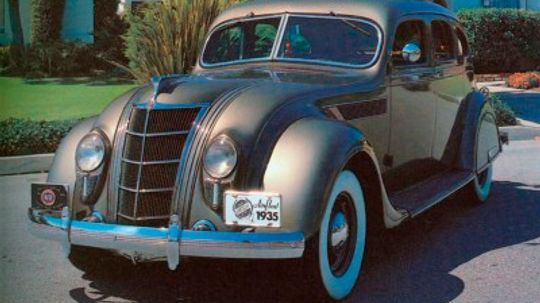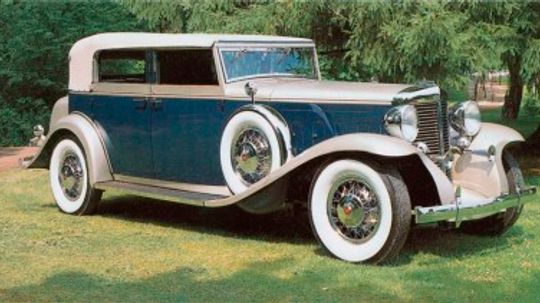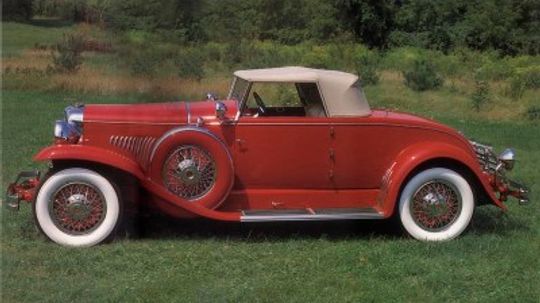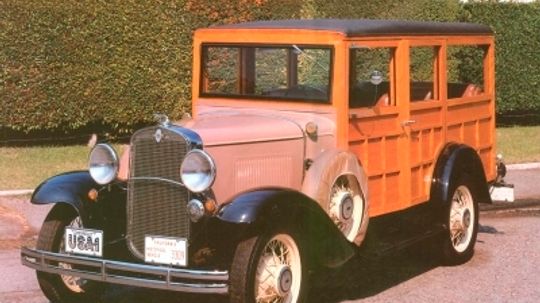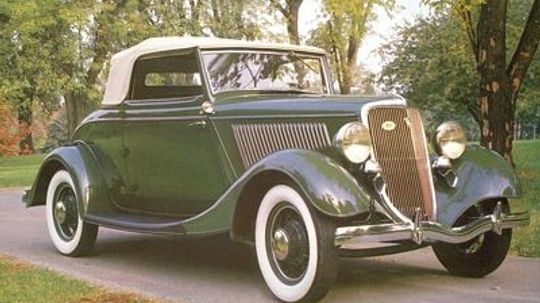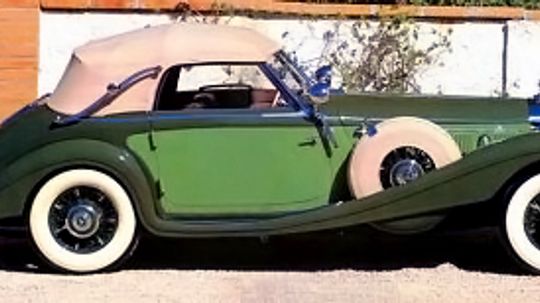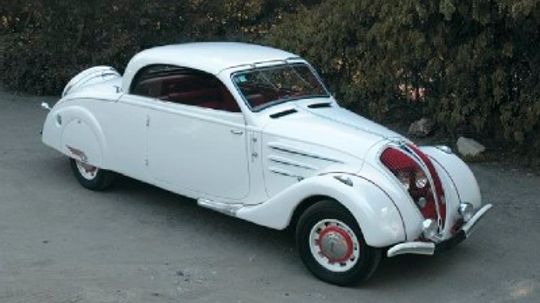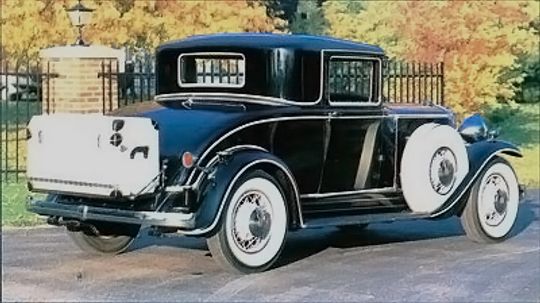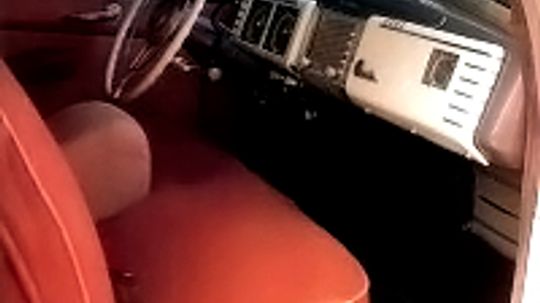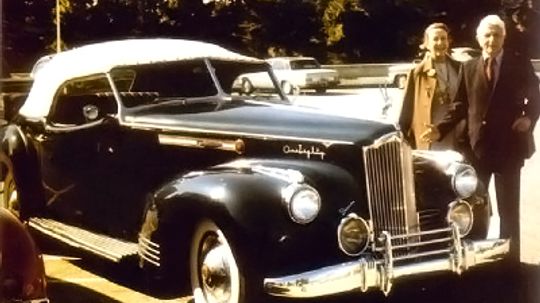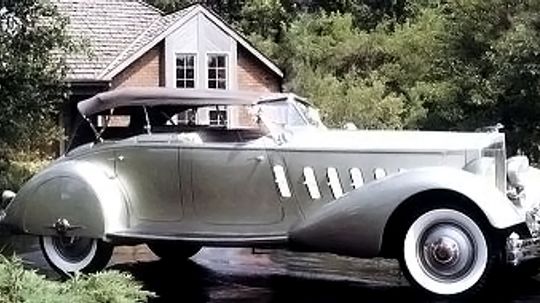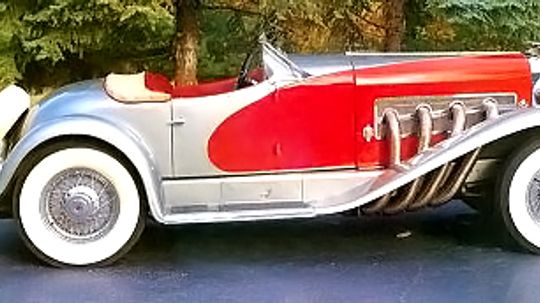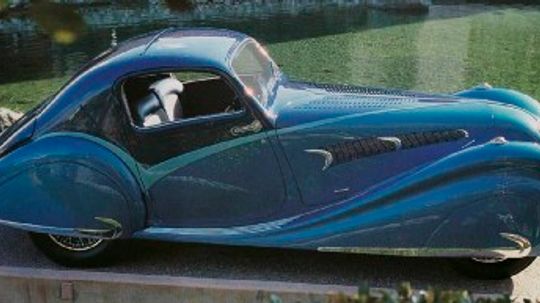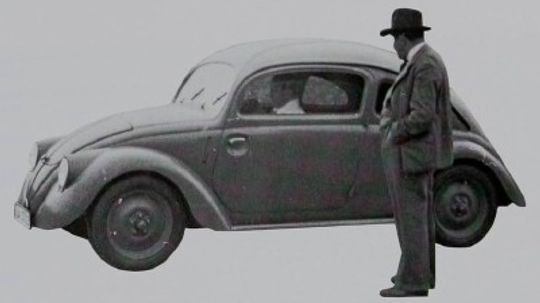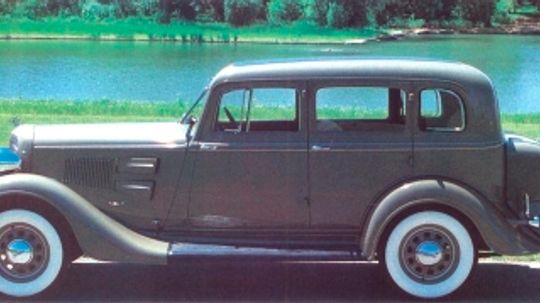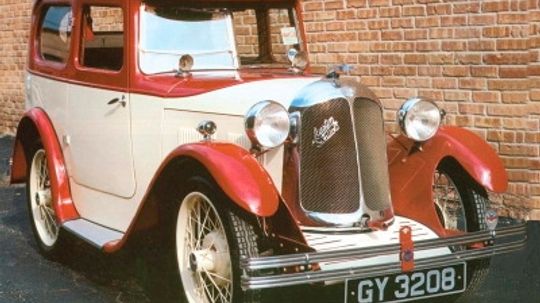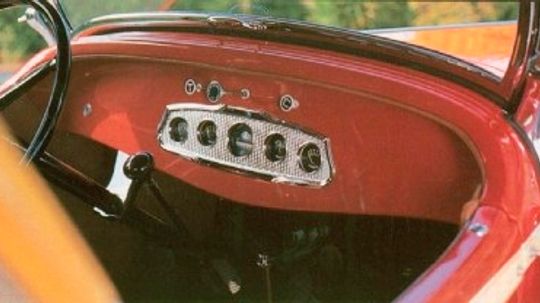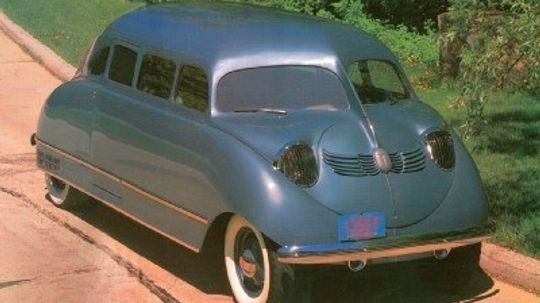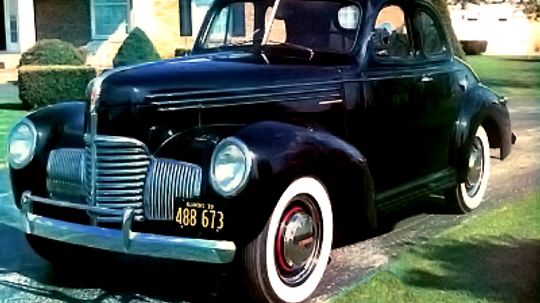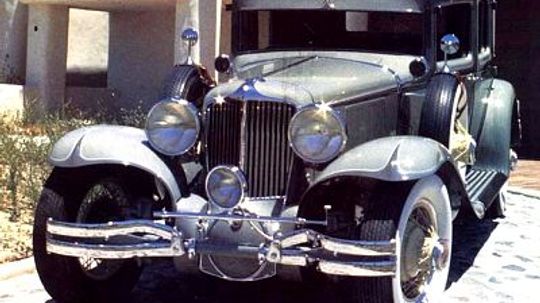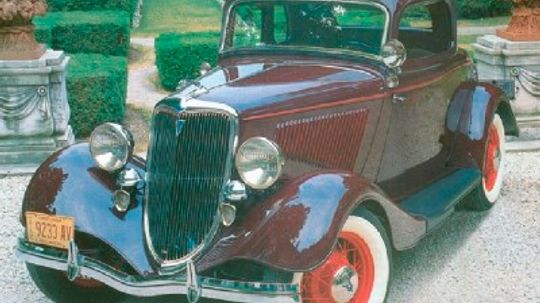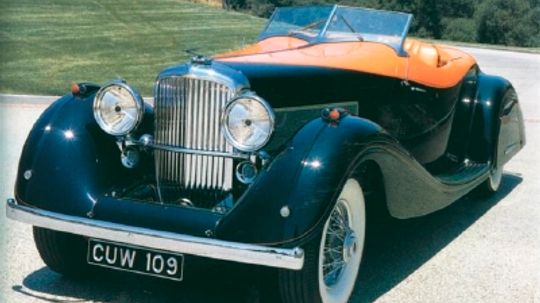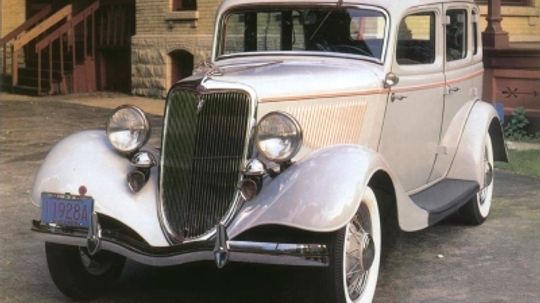1930s Classic Cars
The 1930s was a period of massive expansion in the auto industry. Learn about the Bugatti, Fords, Packards and other classic cars from the the 1930s in this section.
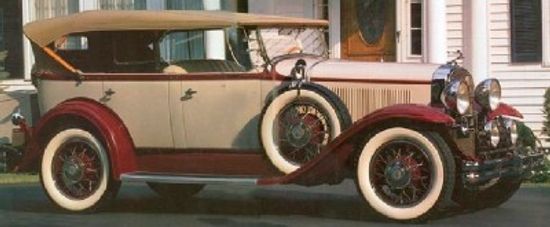
1930 Buick Series 40 Phaeton
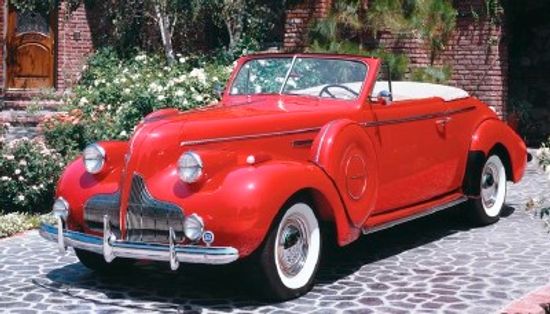
1939 Buick Century
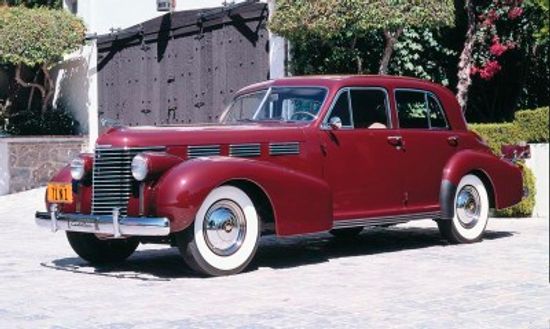
1938 Cadillac Sixty-Special
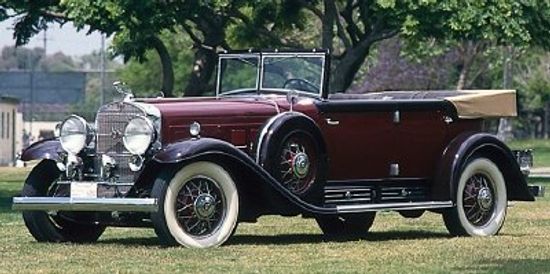
1930-1939 Cadillac
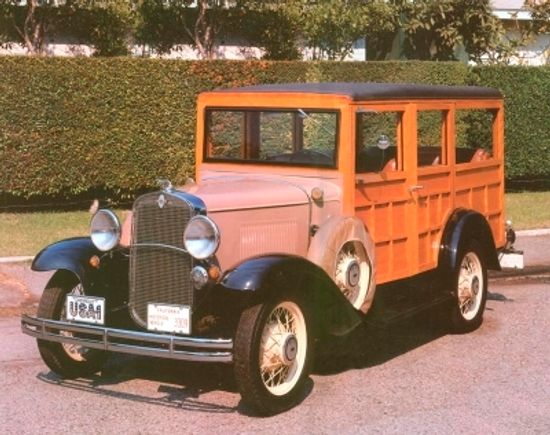
1931 Chevrolet Series AE Station Wagon
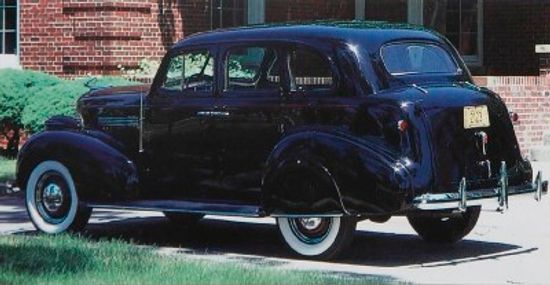
1939 Chevrolet
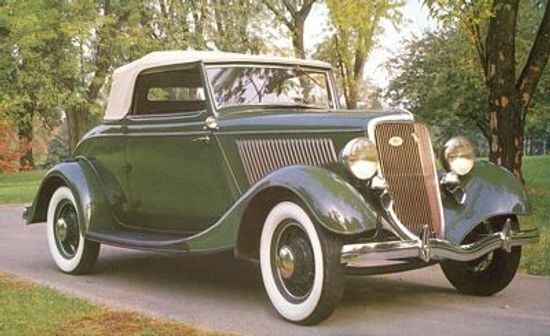
1934 Ford DeLuxe Roadster
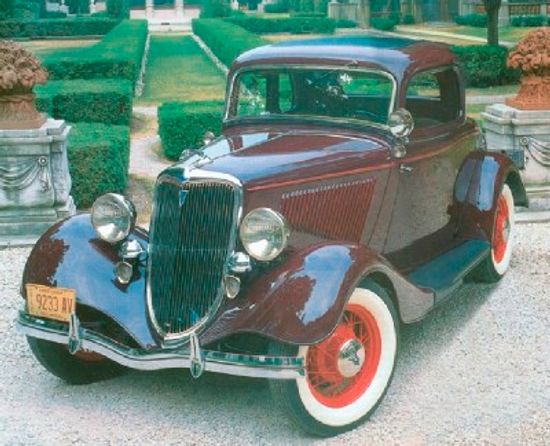
1934 Ford DeLuxe Five-Window Coupe
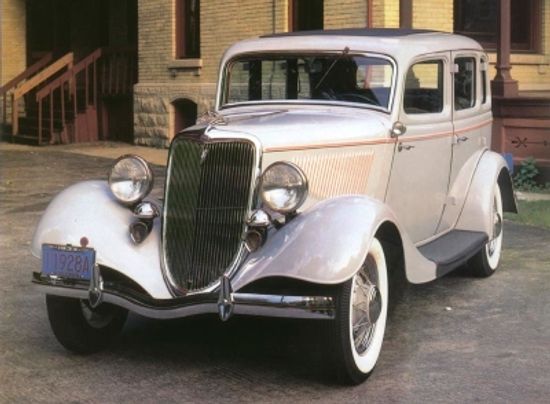
1934 Ford DeLuxe Fordor
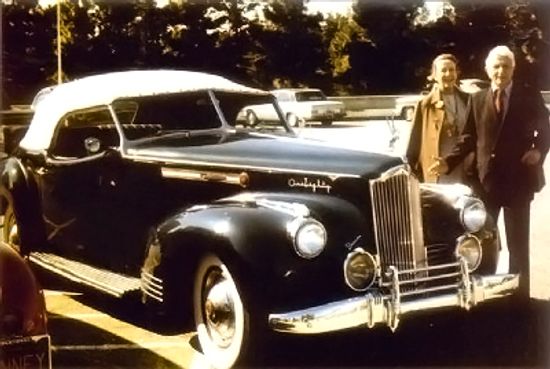
1937-1942 Packard Darrin
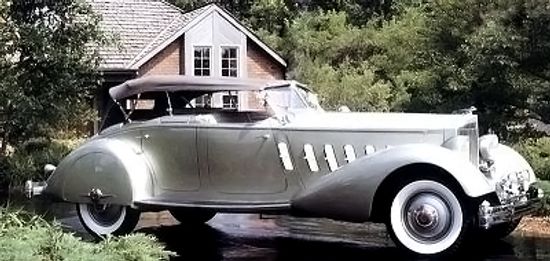
1934 Packard Twelve Sport Phaeton by LeBaron
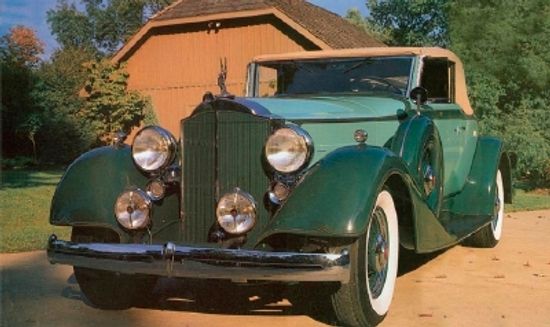
1934 Packard Eight
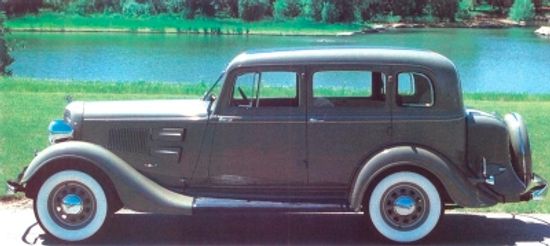
1934 Plymouth PE Deluxe
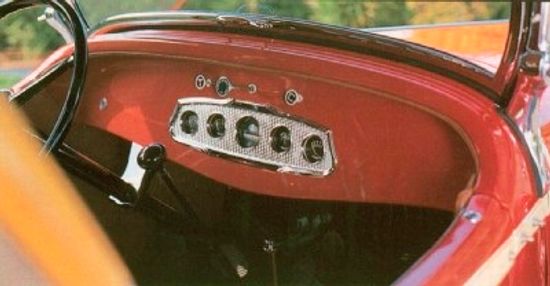
1932 Plymouth PB Sport Roadster
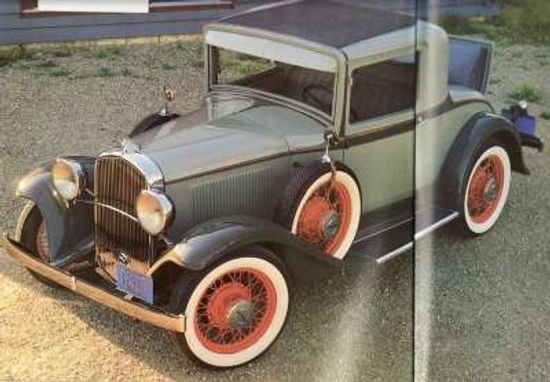
1932 Plymouth PA Rumble-Seat Coupe
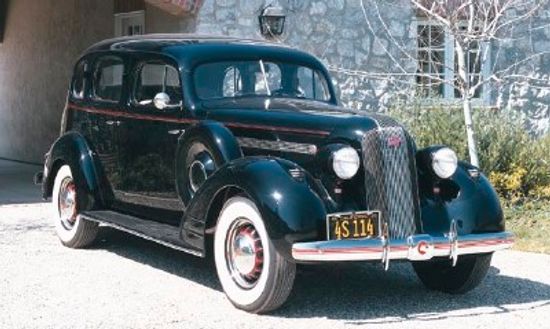
1935-1936 Pontiac
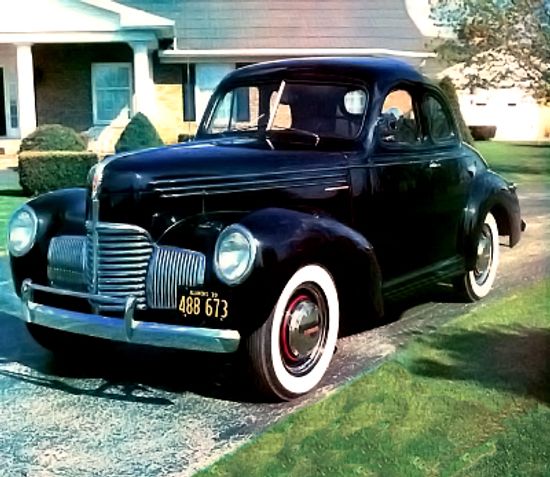
1939 Studebaker Champion
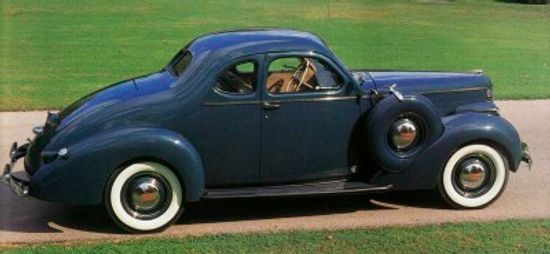
1938 Studebaker State President Coupe
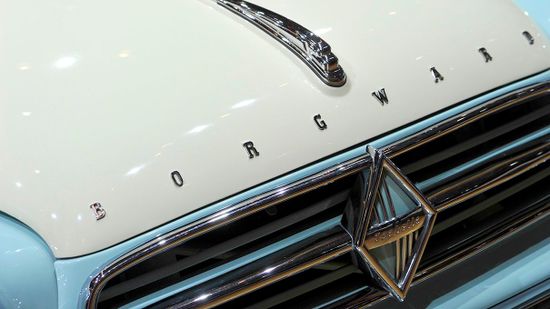
The Crazy Story of Borgward, the German Carmaker You've Never Heard Of

1934-1937 Chrysler Airflow
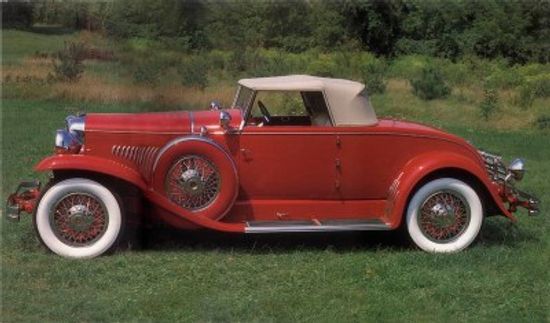
1928-1934 Duesenberg J-Series
Learn More
You've heard of Volkswagen. And Daimler. And Porsche. And Audi. But Borgward? Probably not.
The 1934-1937 Chrysler Airflows were revolutionary in that they were aerodynamic, but they were not a success for Chrysler. This was one of the first cars that was styled with aerodynamics in mind. Learn more here.
The 1931-1933 Marmon Sixteens were exciting automobiles that were fast, light, and good at climbing hills. The car weighed about 500 pounds less than the rival Cadillac models because of the extensive use of aluminum. Learn about the 1931-1933 Marmon Sixteen.
Advertisement
The 1928-1934 Duesenberg J-Series automobiles were beautiful, well-built machines that were made in low numbers during the Depression. This car stood out above all others when it was introduced at the New York Salon on December 1, 1928. Learn more.
The 1931 Chevrolet Series AE Station Wagon was Chevrolet's first factory-authorized "woody" station wagon. The AE chassis also served as the basis for a series of light-commercial vehicles. Read more about the 1931 Chevrolet Series AE Station Wagon.
The 1934 Ford DeLuxe Roadster was known for its explosive speed, and was popular among the police and crooks. A 85 bph flathead V-8 provided the performance for the DeLuxe Roadster. Learn more about this quick roadster.
The 1938 Mercedes-Benz 540K Cabriolet A was a powerful touring car with a supercharged engine. Only a handful made it to the United States, making it extremely rare. Learn more about the classic 540K cabriolet.
Advertisement
The 1938 Peugeot 402 B Retractable Hardtop was inspired by the 1934 Chrysler Airflow. It featured futuristic styling and carried on Peugeot's tradition of being tough and dependable. Learn more about this classic.
The 1932-1935 Graham Blue Streak was a trend setter for the American auto industry during the Depression-era. Its cutting-edge design and performance made the Blue Streak one of the most popular cars at the time. Learn more about the Graham Blue Streak.
The 1939 Chrysler New Yorker Four-Door Sedan was elegant and befitting times with respect to design. The New Yorker sedan sold for $1,298 and weighed 3,695 pounds. Learn more about this elegant classic car.
The 1937-1942 Packard Darrins were designed by Howard A. "Dutch" Darrin. They were quite expensive at the time with a price tag equivalent to six figures today. Learn more about these pricey classics.
Advertisement
When Cadillac introduced its V-16 for 1930 and V-12 in 1931, Packard had no choice but to offer a new multi-cylinder engine. Packard came up with one of its most elegant efforts. Learn more about the 1934 Packard Twelve Sport Phaeton by LeBaron.
Duesenberg advertised its Model J, introduced on December 1,1928, as "The World's Finest Motor Car." The 1936 Duesenberg SSJ Speedster was a sight to behold and so special that only two were built. Check out the rare 1936 Duesenberg SSJ Speedster.
The 1936 Delahaye 135 Competition Coupe was a French-made six-cylinder car. In the late 1930s, the sporty Delahaye Type 135 scored wins in the Monte Carlo Rallye and at LeMans. Read more about this race winning classic.
The 1931-1945 Volkswagen Beetle designs never saw high-volume production because they were interrupted by World War II. But they did lead to the reliable low-cost cars that spread worldwide. Read the story of the 1931-1945 Volkswagen Beetle.
Advertisement
The stylish 1934 Plymouth PE Deluxe achieved sales numbers that helped lift Plymouth to third place. This model was the one-millionth Plymouth off a Detroit assembly line. See pictures are learn more about the 1934 Plymouth PE Deluxe.
The 1932 Austin-Swallow classic car was born out of a collaboration between two rival British automakers. The Seven debuted as a "tourer" with room for two adults and two children and also featured four-wheel brakes. Explore this classic car.
The story of the 1932 Plymouth PB Sport Roadster starts with Walter Chrysler who, like Charles Nash, learned about the business at General Motors. Not until 1924 did Chrysler have a car under his name. Check out the 1932 Plymouth PB Sport Roadster.
The 1936 Stout Scarab came about in the early 1930s when William B. Stout, head of the Stout Engineering Laboratories in Dearborn, Michigan, dreamed of a rear-engine, rear-wheel drive combination. Read about the unusual, pioneering 1936 Stout Scarab.
Advertisement
If ever a car was appropriately named, it was the 1939 Studebaker Champion. The Depression had taken its toll, and the very survival of America's oldest automaker depended on this budget-price entry for 1939. Check out the 1939 Studebaker Champion.
The 1929-1931 Cord L-29 was intended to fill the price gap between the Auburn Eight and the mighty J in Cord's miniature automotive empire. Read how the Cord L-29 was engineered along principles patented by famed race-car designer Harry Miller.
The 1934 Ford Deluxe Coupe more going for it than just power and economy. It was also stylish, thanks to Henry Ford's son Edsel. Fancy styling details along with 90 horsepower quickly set it apart. Check out the 1934 Ford DeLuxe Five-Window Coupe.
The 1935 Duesenberg Speedster-Roadster was a custom car for the Maharajah Holkar of India. The speedster sported a concealed top, built-in license plate holder, dual fuel tanks and single-bar bumpers. Learn more about this classic car.
Advertisement
The 1934 Packard Eight may have been the low-level series, but during the Depression it was popular. The excellence of these cars has long been recognized -- they carry full Classic status with the Classic Car Club of America. Discover this classic car.
The 1934 Ford DeLuxe Fordor sported classy styling and a sharp hood ornament after a minor facelift. Its V-8 also boasted 10 more horsepower, up now to 85. See pictures and learn more about the 1934 Ford DeLuxe Fordor.
